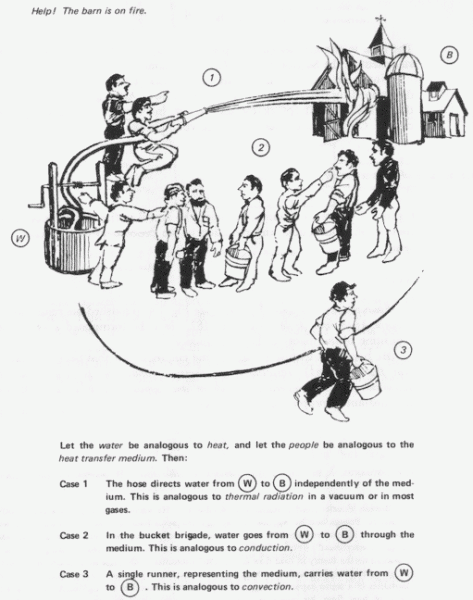Heat Transfer
Today, we move energy. The University of Houston's College of Engineering presents this series about the machines that make our civilization run, and the people whose ingenuity created them.
This week, engineers will meet from all over the world for the National Heat Transfer Conference here in hot Houston. When I tell people I'm going to a heat transfer meeting, they look at me oddly. What's that, they wonder. Yet these same people live in, and worry about, a world that eats huge amounts of energy.
The central issue we worry about is how energy moves from place to place. Ever since Einstein, we've known that energy and matter are two faces of the same coin -- the very stuff of which the entire universe is made. Matter can be seen. We watch it moving on trucks and trains, in earthquakes, tides, and hurricanes.
Energy also swirls around us, but, because it's invisible, we're less aware of it. Wherever there are differences in temperature, pressure, voltage -- energy can flow. So 600 engineers will gather and tell each other what they know about how temperature drives energy -- how heat flows. To help you catch some flavor of the subtleties, I'll put three riddles before you:
(1) We're supposed to wear white clothes in the summer because black absorbs more sunshine. Why then does nature put dark-skinned people on the equator where the sun pours down energy, and light-skinned people in the far North?
(2) How did the story that hot water freezes more quickly than cold get started?
(3) Why does metal seem colder than wood in your office?
First, skin color. While dark skin is better protected from ultraviolet radiation, it does absorb more of the energy in visible light than light skin. But most of the sun's heat comes in invisible infrared radiation. Dark and light skin are the same color in that range. Dark skin absorbs no more heat than light skin does.
Next, the "hot water freezes faster" story: When we put trays of water in frosty freezers to make ice cubes, frost insulates them. Hot trays melt the frost and make better thermal contact with the cooling coils. But there's more. Some of the hot water evaporates in the cold dry air. There's less to freeze, and evaporation speeds cooling. So that story really can be true.
And what about metal feeling colder than wood? Your body has to be warmer than the room to shed heat. Your nerve endings are warmer than either wood or metal. But metal conducts heat away more quickly and it holds more heat. Your finger is cooled as it rapidly drives heat into the metal. That's why metal, at the same temperature, feels far colder than wood.
A large diamond would feel even colder than metal. But real diamonds are small, and they suck the heat out of your finger so very fast that they quickly match your finger's temperature. That's why people like to say "Diamonds are warm!"
Heat flow has many ways of fooling us. Scale these ideas up to a huge power plant or down to a laptop computer and they offer wonderful fun and challenge. I'd like to say we meet to build a better quality of life. Well, sure, there's that. But we really do it for the exquisite pleasure of facing the questions themselves.
I'm John Lienhard, at the University of Houston, where we're interested in the way inventive minds work.
(Theme music)
See, e.g., J. H. Lienhard IV and J. H. Lienhard V, A Heat Transfer Textbook. 3rd ed., Cambridge, MA: Phlogiston Press, 2004, Click here for a free copy.

Conduction, Convection, Radiation Analog
From A Heat Transfer Textbook